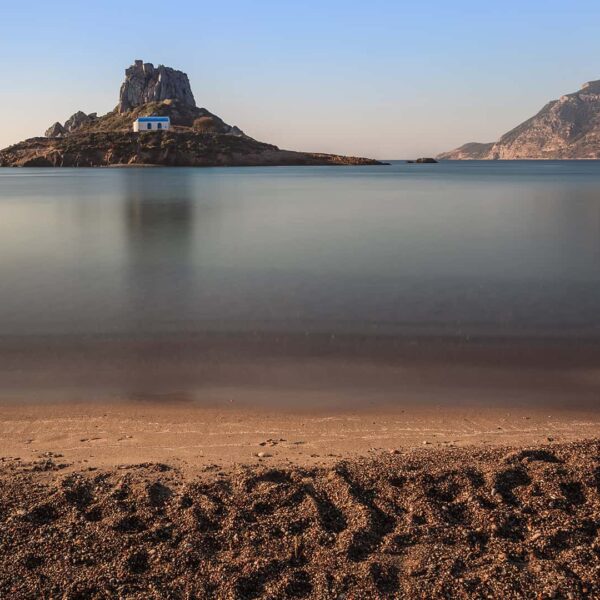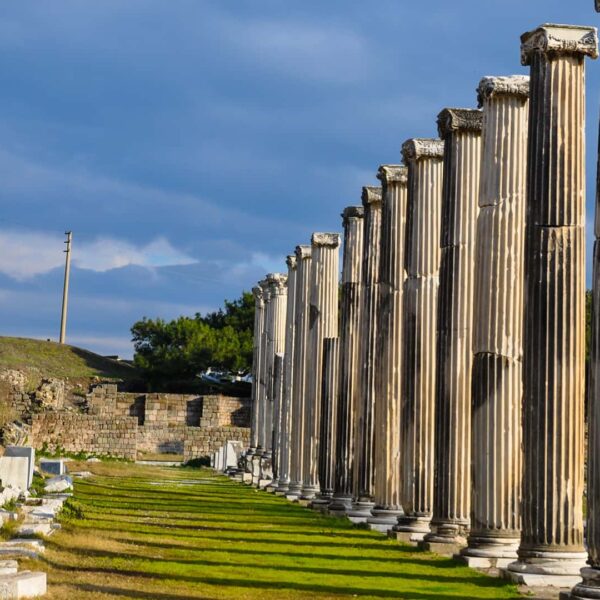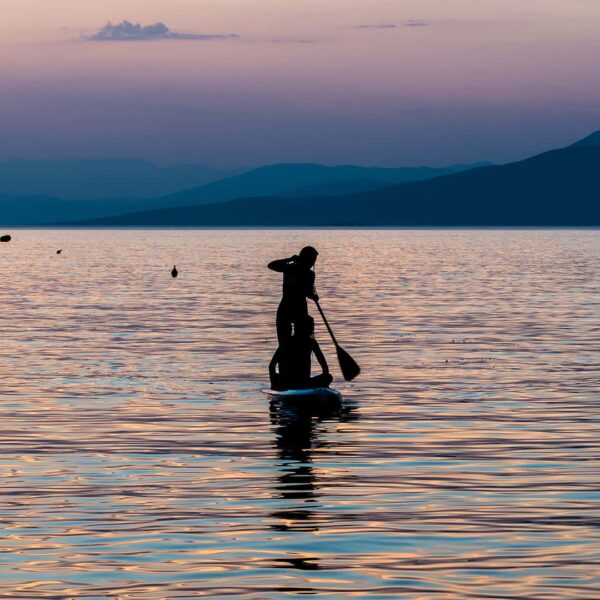The third largest Greek island in the Dodecanese complex, known for its historical sites, and long sandy beaches.
There are lots of legends surrounding Kos, but the most famous one goes back to the island’s genesis, at the dawn of time, when the Giants and Titans fought the Olympian gods. When Kronos – the god of time and king of Titans – ruled, Zeus and the Olympian gods rebelled against him. A war of apocalyptic proportions – the Gigantomachy – broke out among the celestial beings. In the heat of the battle, Poseidon – god of the sea– chased Polyvotis, the giant, all the way to Kos:
“They say that Nisyros is a fragment of Cos, and they add the myth that Poseidon when he was pursuing one of the giants, Polybotes, broke off a fragment of Cos with his trident and hurled it upon him, and the missile became an island, Nisyros, with the giant lying beneath it. But some say that he lies beneath Cos,” – Strabo, Geography.
So there you have it. The immortal giant is still lying under either Nisyros or Kos. If you don’t sense his presence underfoot in Kos, you can take a day trip to the neighboring island of Nisyros for a hike around the Stefanos crater to see whether he’s lurking there…?!
Kos is the third largest Greek island in the Dodecanese complex, known for its historical sites, and long and sandy beaches. Long ago, Kos was famous for silk and wine.
Now, silk is a defunct industry; but Kos wine has seen a revival in recent years, with several wineries popping around the volcanic landscape of the island. The island is also famous for its watermelons, which you can buy by the roadside in many villages.

13km southeast of Kos Town, Therma Beach is a unique natural spa. For more privacy, go in the early morning or late at night. Because there are no entrance fees, it can get very crowded. Legend has it that if you go at night with the right guide, there is a special place in the sea here where the water’s surface appears covered in gold dust; due to an optical illusion created by sulphur, from the local hot springs, glowing in the dark.

Kos’s ‘star’ attraction is this sanctuary of Asclepius or Aesculapius, the god of medicine. The structure stood as the most renowned Asklepion – treatment or healing center – during antiquity and hosted, as is believed, the Medical School run by ancient Greek physician Hippocrates, the father of Medicine. Patients here were not offered therapy through divine intervention and the like, as was the case at the other well known Asklepions, but, instead, through scientifically based medical methods.

Kos is a Greek island that definitely won’t disappoint adrenalin junkies. Almost every beach has a watersports center offering everything from windsurfing, kite surfing, SUP, parasailing and kayaking to jet skis, wakeboards and bananas. Experienced windsurfers and kite surfers tend to congregate at the large and popular beaches of Psalidi (west of the town) and Marmari (on the northern coast), although beginners are better off at Mastichari to the west.
Mylos Beach Bar is located on the beach in Lambi just north of Kos Town. Built around an old windmill, it is a beautiful setting and a great place to chill out in the day. They serve good food which they’ll bring right to your sun lounger! Not to mention, they throw great parties in the evening. A must-visit bar on your trip to Greece.
Kos is a volcanic island, and eons of volcanic activity have provided the perfect soil conditions for cultivating melons. They are organically-grown and have a unique, delicious taste. If you want to eat like a local on your trip to Kos watermelon is an absolute must-have! Once you’ve had your fruit fix, why not buy some possa (a local cheese that’s aged in wine for five months) from Yiannou’s Dairy in Pyli?
Of the island’s wineries, two are open for visitors: Triantafyllopoulos in Ziprai and Hatziemmanouil in Linopoti. Both produce award-winning wines that you can buy or sample on the spot. A must for wine lovers travelling Greece!
Nafplio has had a turbulent history, full of occupation, and the Venetians left their mark by way of pasta. One Greek pasta product is Trachanas. Trachanas is made of sour milk and wheat boiled together and then dried in the sun and prepared as a soup. The best place to try this specialty is at Mr Mallios’ shop on Polizoidoy – Mr Mallios used to be a ship captain before retiring to devote his time to making Trachanas and other delicious Greek specialties, and we are very grateful for his career change!
Watching a movie at Orfeas Open Air Cinema is a wonderfully Greek way to spend an evening while on Kos. Film info can be found on their website: http://www.cine-orfeas.gr/?lang=en You buy tickets at the door, the picture quality is great along with the surround sound, and there is a good bar at the back serving drinks and snacks.
Would you like to find out more about this destination or speak with one of our Epicureans about the best options in Greece? Reach out to one of our experts who can tailor an unforgettable experience that will be the envy of your friends.